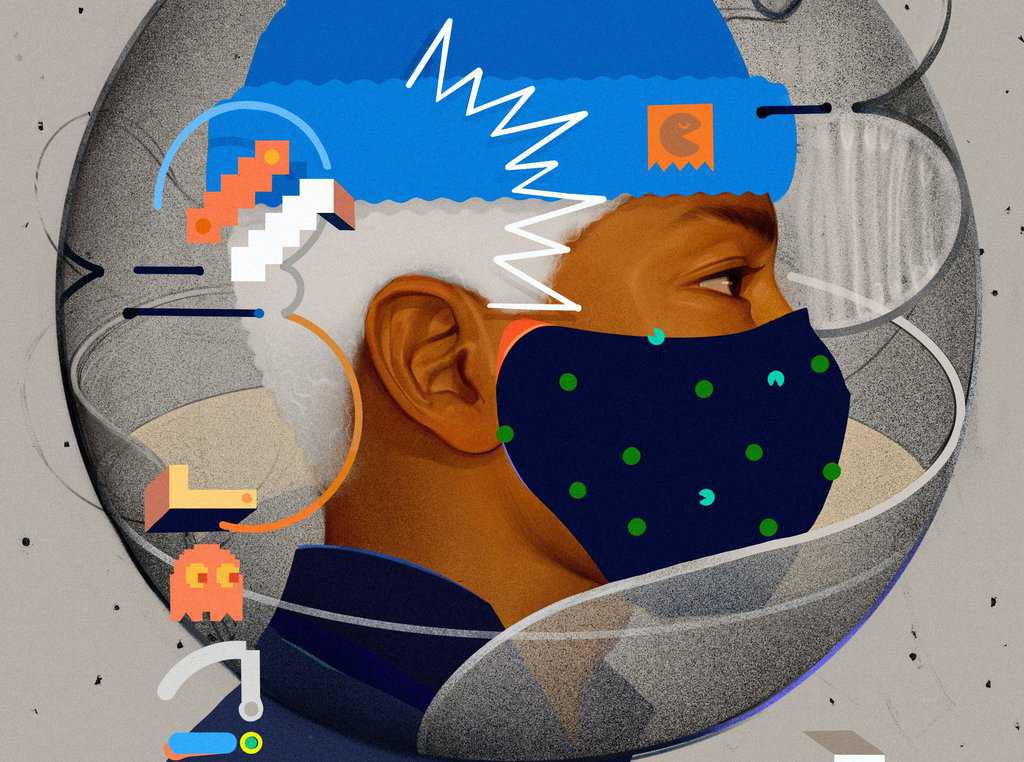It is an important time in history for healthcare professionals to examine their own internal biases, and also look at the health care system as a whole. Studies have shown that by and large, Black Americans get less, and sometimes worse, care than white Americans. And much of this discrepancy comes from a distrust sown from years of abuse. We have a list of books you can read to gain a deeper understanding of this history. But if you want a quick overview, here are some things you should know about healthcare and racism.
The Tuskegee experiment
The Tuskegee experiment wasn’t the first time that healthcare professionals mistreated black patients, and it certainly wouldn’t be the last. But the 40 year study on syphilis that started in 1932 would become infamous among Black people in America. And it would come to represent the way white medical professionals value Black lives. So as a nurse, it’s important you know what happened.
In Macon County, Alabama, 600 Black men were chosen as subjects for a study on untreated syphilis among Black communities. But most of them had no idea they were participating in the study. It was conducted by the United States Public Health Service (USPHS) and involved blood tests, x-rays, spinal taps and eventually, autopsies of the subjects. The men chosen for this study, mostly because doctors had recognized syphilis in their lab reports, were simply told they were being treated for “bad blood.” And many received no treatment at all.
Even after penicillin was discovered as a safe and reliable cure for syphilis, the majority of men did not receive it.
On top of knowingly allowing Black men to die of a treatable disease, the experiment was rooted in pseudoscience and incorrect, racist theories of medicine. Scientists at the time believed Black men to be naturally hyper-sexual, and thus more likely to contract sexually transmitted diseases. They attributed the lower birth rate and higher miscarriage rates among black communities to STDs, without any real evidence of this being true. Many doctors and medical professionals operated under the assumption that Black men had larger genitals but smaller brains, and thus were inherently sexually perverse and immoral. This kind of pseudoscience helped reinforce the most common motive for lynching black men: accusing them of raping white women. Thus the most brutal forms of racism during the Jim Crow era were inherently linked to healthcare and to the Tuskegee Experiment itself, which in some ways existed to service sexual stereotypes about Black communities.
It was also at the root of scientists’ hypothesis that Black men and women were so unintelligent that they would not seek treatment for syphilis or other diseases. By the 1950s, though, doctors involved in the study were actively trying to stop their patients from learning of or seeking treatment for their disease. And even against their best efforts, 30 percent of subjects who survived to that point had received penicillin treatments.
None of it made sense. Saying that Black men were too “stoic” to seek out or retain treatment for syphilis was inherently flawed because their subjects were told they were already receiving treatment. But the point was to reinforce the idea that Black communities are less likely to seek out medical treatment and thus their higher death and infection rates made sense, absent of any medical malice. It’s important to note because this belief still exists in medicine today.
There’s a lot more to learn about the experiment. This site gives a great and more detailed overview. A final note on the study: It continued until 1972, two decades after the Nuremberg code was written to prohibit harmful human experimentation.
Eugenics and forced sterilization
There were 5,000 black women sterilized without their consent from 1933 to 1973 in North Carolina alone. Never heard of forced sterilization? This is how it happened.
Back in 1849, a Texas biologist and physician proposed a bill mandating sterilization of the mentally handicapped and any of those possessing genes he deemed “undesirable.” The proposed law was rooted in a growing philosophy of the time called eugenics. Eugenics was a belief, largely held by scientists, that you could improve the human species by controlling reproduction, only allowing the birth of children whose parents have “desirable” genetic traits. It was inherently racist. The bill didn’t come to a vote in 1849, but it was the first of its kind. And would come up again and again in the decades to come.
Finally by 1909, Indiana, California and Washington all successfully passed mandatory sterilization laws for the “feebleminded,” meaning mentally handicapped. In 1927, the Supreme Court ruled that forced sterilization was not against the constitution. Justice Oliver Wendell Holmes said that “It is better for all the world, if instead of waiting to execute degenerate offspring for crime, or to let them starve for their imbecility, society can prevent those who are manifestly unfit from continuing their kind.”.
By the 1960s, tens of thousands of Americans were sterilized in state-run eugenics programs, according to investigative reporters for NBC News. NBC interviewed women who had gone into the hospital for some kind of procedure, sometimes to give birth, and afterwards, without their consent, were sterilized. One woman, Elaine Riddick, discovered records that an 8-person eugenics board in Raleigh, North Carolina had deemed her “feebleminded” and “promiscuous” and recommended she be sterilized. She was only 13 years old at the time, and was pregnant after being raped by her neighbor. This was what eugenics programs did. A group of white men assessed patients they had never met and deemed whether they were fit to bear children.
This practice was all but endorsed by the White House in the 1970s, when the Nixon administration dramatically increased Medicaid-funded sterilization of low-income Americans, predominantly people of color. While Nixon’s policy required voluntary consent from patients, this restriction was largely evaded. Thousands of patients have come forward to say that they were sterilized without their consent. Almost all of them were black women, Native American women and Puerto Rican women. The last known legal forced sterilization was performed in Oregon in 1981.
Sickle Cell disease
It’s widely known among the medical community that sickle cell disease is more common among Black Americans. Sickle cell is a genetic disease that affects hemoglobin, the molecule in red blood cells that delivers oxygen to cells throughout the body, and it can cause chronic pain, multi-organ failure and stroke. Because sickle cell is genetic and scientists guess that it began in West Africa, Americans with a strong African ancestry are more likely to have it.
It’s no coincidence that sickle-cell impacts Black Americans more acutely than any other race and sickle-cell research receives far less funding than comparable diseases. There are more cases of sickle cell than cystic fibrosis, yet cystic fibrosis receives 3.5 times more funding. For this reason, there has been far less progress in treating and preventing sickle cell, even though 1 out of 13 black babies are born with the genetic trait.
While life expectancy for almost every major medical condition has increased in recent years, the life expectancy for sickle-cell has decreased. In 1994, life expectancy for sickle cell patients was 42 for men and 48 for women. By 2005, life expectancy had dipped to 38 for men and 42 for women.
It’s not just about funding and research. The way patients with sickle-cell are treated plays a large role in their ability to survive the disease. Many cases of sickle-cell get misdiagnosed, even though a genetic test will make it clear whether a patient has the trait. One medical student said that she was taught to be careful with sickle-cell testing because “they might become de facto paternity tests.” While a sickle-cell test does reveal genetic inheritance patterns, so do tests for cystic fibrosis and Tay-Sachs disease. She said there was never a concern about revealing a different “baby-daddy” in these other tests.
Sickle-cell involves dramatic episodes of pain, which need to be treated or they can result in death. But many patients are told to go home, or are left waiting in an emergency room for hours when they are admitted for a sickle-cell flare up. This connects to a pattern of medical professionals continually doubting and undermining the pain of their Black patients.
Pain
There’s a fact getting passed around the internet recently that encapsulates the problem with how Black patients are treated: Black Americans were actually spared in the opioid addiction crisis because physicians were so resistant to prescribing them pain medication.
According to MedPage Today, white patients are twice as likely to receive opioids for migraines or back pain as black patients. This is rooted in the false belief that Black patients feel pain less acutely than white patients. A study in 2016 found that half of white medical students in a 200+ person survey believed that there were biological differences between how white and black patients experience pain. And these respondents were more likely to suggest inappropriate treatment for black patients, underscoring how false ideas about race and medicine can cause physicians to act incorrectly in many cases.
This viral Tik Tok coming from white OBG-YN Dr. Jennifer Lincoln puts it best: “It’s a holdover from the days of slavery, when white people needed to feel better about abusing slaves. Black people used to be operated on without anesthesia and were used in studies without their consent, so this was a convenient lie. To this day, Black people are less likely to get the same treatment in terms of pain medication. They’re more likely to wait longer in the emergency room. They’re less likely to be taken seriously. It’s a holdover from the days of slavery.”
Maternal Mortality
As Lincoln pointed out in her Tik Tok, perception of Black pain plays a huge role in the maternal morbidity crisis, one of the most modern areas of blatant racism in healthcare.
According to the CDC, Black women in the U.S. are 243% more likely to die from pregnancy than white mothers, one of the widest of all racial disparities in women’s health. Researchers also said that about 60% of all pregnancy related deaths can be prevented with better care.
Many signs of preeclampsia, a dangerously high blood pressure during pregnancy which is the leading cause of maternal death, often go ignored for black patients, as the New York Times reported back in 2018. Preeclampsia and the seizures that develop after preeclampsia are 60% more common for Black women. This quote from Times piece seems most telling:
“Black infants in America are now more than twice as likely to die as white infants — 11.3 per 1,000 black babies, compared with 4.9 per 1,000 white babies, according to the most recent government data — a racial disparity that is actually wider than in 1850, 15 years before the end of slavery, when most black women were considered chattel.”
And while some might chalk a higher infant and maternal mortality rate up to lower income and lack of education, this actually factors very little. A black woman with an advanced degree is more likely to lose her baby than a white woman with less than an eighth-grade education.
Even American exceptionalism, or the belief that we are the leader of the world in scientific and all kinds of advancement, is brought crashing down as a result of racism. The lack of care American healthcare offers to Black mothers causes it to rank at the very top among industrial countries in infant and maternal mortality rates. That’s not a list you want to come in at #1. The United States is one of only 13 countries in the world where the rate of maternal mortality is now worse than it was 25 years ago.
Doulas, or a medically trained woman who offers guidance and support during pregnancy and birth, have made a comeback in recent years, as one potential solution to improving care for Black mothers. Community-based doula groups have popped up in cities across the country aimed at providing black women in particular the care they are not getting from their doctors.
COVID-19
Finally, the most recent instance of racism in healthcare is happening right now. The COVID-19 death rate for black Americans is 2.33 times higher than the death rate for white Americans, according to a report put out by the APM Research Lab on June 11. The blog Scientific American put this into context: If Black Americans were dying at the same rate white Americans were, 13,000 people would still be alive.
In today’s health crisis, there’s a throughline of all the historical racism we have detailed for you above. For a century, doctors and physicians have claimed that Black people are genetically dispositioned to contract certain diseases, to die earlier, to wait too long to seek out care. And with the great racial disparity of COVID-19, you’re seeing them do it again. Louisiana Senator Bill Cassidy, who was a doctor before he was elected, said that there were “genetic reasons” for why Black residents were dying at a higher rate than white residents. He cited no evidence. Scientists writing in Lancet and Health Affairs, some of the world’s leading medical journals, have also cited unknown genetic and biological factors as a possible cause for higher Black death in COVID-19, also providing no evidence.
The widely held concept that there are genetic factors that lead Black Americans to have higher blood pressure and diabetes is dispelled pretty well here. The reality is there are environmental factors that cause Black patients to have underlying conditions like asthma, which could make their COVID symptoms worse: higher rates of pollution in black neighborhoods, lack of quality housing, limited access to healthy food, and racial discrimination in healthcare, for starters.
On top of these underlying health conditions, the care that Black Americans receive when they get sick is also killing them at higher rates. As has been proven in studies and anecdotal evidence throughout history, doctors and physicians tend to not take Black patients’ pain as seriously as white patients. And this has been displayed as many Black patients claim to have been denied COVID-19 tests despite displaying symptoms. According to a study from research firm Rubix Life Sciences, Black patients displaying COVID-19 symptoms were six times less likely to receive testing or treatment, in comparison to white patients who exhibited symptoms.
White communities are also more likely to have more testing sites than Black neighborhoods. NPR reported that Nashville, Tennessee was initially unable to transport tests and PPE to testing sites in neighborhoods that were predominantly Black. And in Chicago, Black neighborhoods had lower testing rates than white neighborhoods.
Once again, Dr. Lincoln’s Tik Tok says it best: “Doctors, nurses, anybody in the medical field, check your implicit bias. Stop yourself every time you’re caring for somebody who has a different skin color than you and check your bias.”




